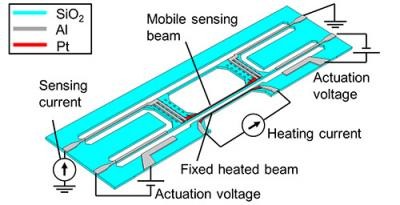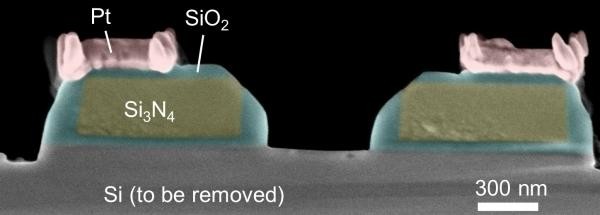Some of our work is aimed controlling heat transfer at the nanoscale using near-field thermal radiation. When objects that support an infrared surface polariton resonance (e.g., doped silicon, silicon dioxide, silicon carbide) are brought to submicron distances, they can exchange heat through coupling of their surface wave. This heat conduction channel presents unique features compared to conventional heat transfer. For example, even though the heat transfer still occurs through thermal radiation, it can overcome the black-body radiation limit by several orders of magnitude (see Fig. 1 left). Furthermore, this heat transfer channel field is concentrated on a very narrow frequency range (see Fig. 1 right), as opposed to usual heat transfer channels (i.e., physical contact with broadband phonon distribution). These unique features are expected to yield exciting new applications, such as efficient contact-free cooling or heating of nanostructures, or new types of devices for thermal control such as thermal rectifiers and thermal transistors.

